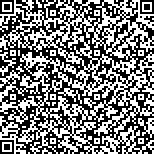| 摘要: |
| 目的 构建成渝地区农业多功能评价指标体系,对农业多功能进行量化分析,并从系统层、指标层探究其主要障碍因子,对实现农业整体效益最大化和促进农业现代化转型升级具有重要的指导意义。方法 文章基于农产品供给、经济发展、社会保障和生态涵养4个维度构建了成渝地区农业多功能评价指标体系,并结合熵值法对2008—2020年成渝地区16个城市的农业多功能发展水平进行综合评价。结果 (1)从整体时间演变来看,成渝地区农业多功能发展水平处于逐步上升的态势,从2008年的0.198上升到2020年的0.436,年均增长6.26%。(2)从障碍因子识别来看,系统层障碍因子识别方面,2008—2020年各系统层平均障碍度从高到低依次为:农产品供给功能>社会保障功能>经济发展功能>生态涵养功能。(3)成渝地区在非粮供给、经济带动和就业机会三方面还存在较大短板,制约了农业多功能的发展。人均农林牧渔服务业增加值、人均水果产量和地均机械总动力3个障碍因素在2008年、2012年、2016年和2020年始终是排名前5位的障碍因素。结论 要提升农业的非粮供给能力,优化农业生产结构;提高农业社会化服务水平,增强农业服务业就业机会与经济带动作用;提高耕地生产率与农业机械化水平,保障农业生产效率;因地施策,促进农业多功能区域均衡发展。 |
| 关键词: 成渝地区 农业多功能评价 障碍因子 时空演变 熵值法 |
| DOI:10.7621/cjarrp.1005-9121.20250219 |
| 分类号:F327 |
| 基金项目:国家社会科学基金一般项目“城乡融合视角下农业功能拓展的共富效应与促进机制研究”(22BJY210);重庆工商大学研究生创新型科研项目“乡村振兴背景下农业功能拓展对农民增收的影响机制及对策研究”(yjscxx2023-211-92) |
|
| MULTIFUNCTIONAL EVALUATION OF AGRICULTURE AND DIAGNOSIS OF ITS OBSTACLES IN THE CHENGDU-CHONGQING REGION |
|
Peng Jianfang1,2, Liu Wen1, Liu Yang3, Mei Dong4
|
|
1.Research Center for Economy of Upper Reaches of the Yangtze River, Chongqing Technology and Business University, Chongqing 400067, China;2.College of Business Administration, Chongqing Technology and Business University, Chongqing 400067, China;3.School of Economics and Finance, Chongqing University of Science and Technology, Chongqing 400054, China;4.Institute of Agricultural Resources and Regional Planning (IARRP), Chinese Academy of Agricultural Sciences, Beijing 100081, China
|
| Abstract: |
| This study aims to establish an evaluation index system for agricultural multifunctionality in the Chengdu-Chongqing region, conduct a quantitative analysis of agricultural multifunctionality, and investigate the key barriers at both system and indicator levels. The findings of this research have significant implications for maximizing overall agricultural benefits and advancing the transformation and upgrading of agriculture towards modernization. The evaluation index system for agricultural multifunctionality in the Chengdu-Chongqing region was devised to cover outputs across four dimensions: agricultural product supply, economic development, social security, and ecological conservation. Furthermore, a comprehensive assessment of the development level of agricultural multifunctionality in 16 cities within the Chengdu-Chongqing region from 2008 to 2020 was conducted by using the entropy method. The results were showed as follows. (1) From the perspective of overall time evolution, there was a gradual increase in the level of agricultural multifunctionality in the Chengdu-Chongqing region over time, rising from 0.198 in 2008 to 0.436 in 2020, with an average annual growth rate of 6.26%. (2) Regarding barrier factors identified at the system level, the average obstacle degree of each system layer from high to low from 2008 to 2020 was as follows: agricultural product supply function > social security function > economic development function > ecological conservation function. (3) The Chengdu-Chongqing region faced significant deficiencies in non-grain supply, economic stimulation, and employment opportunities, hindering the development of agricultural multifunctionality. Three obstacles—per capita added value of the agriculture, forestry, animal husbandry, and fishery services sector; per capita fruit production; and per unit of land machinery total power—consistently ranked among the top five obstacles in 2008, 2012, 2016, and 2020. Therefore, optimizing agricultural production structures is crucial to enhancing the non-grain supply capacity of agriculture, and increasing the level of socialized agricultural services and strengthening the role of agricultural service industry in job creation and economic stimulation is essential. Furthermore, improving land productivity and the level of agricultural mechanization is also crucial to ensure agricultural production efficiency. Tailored strategies should be implemented to promote balanced regional development of agricultural multifunctionality. |
| Key words: Chengdu-Chongqing region agricultural multifunctionality evaluation obstacles factors spatiotemporal evolution the entropy method |

